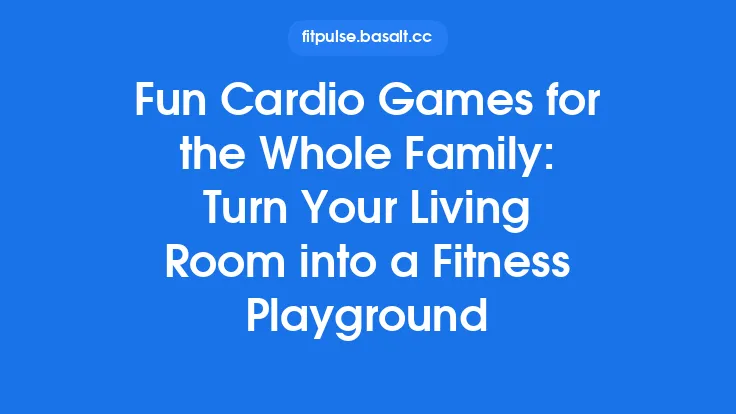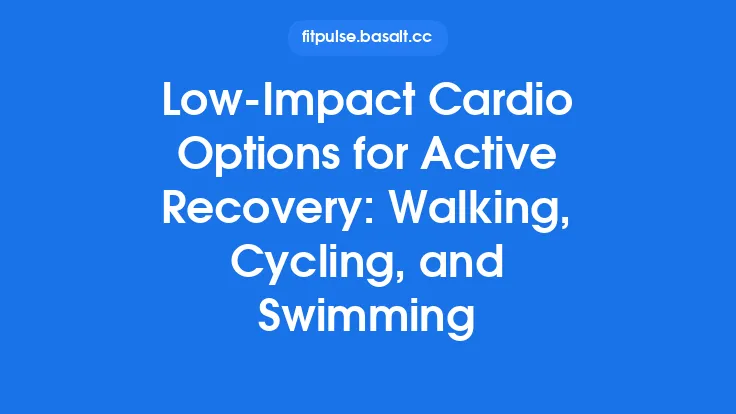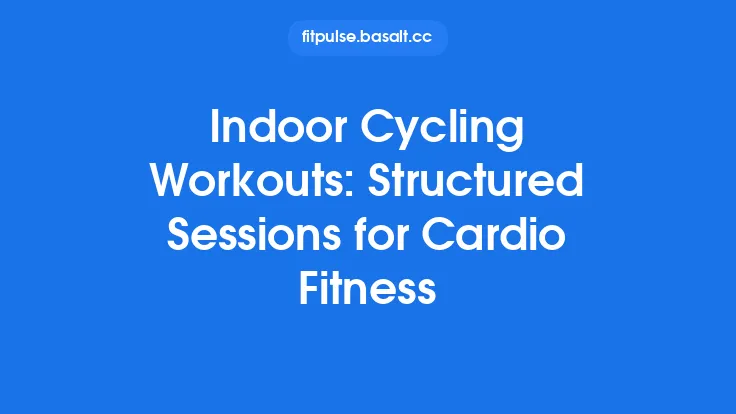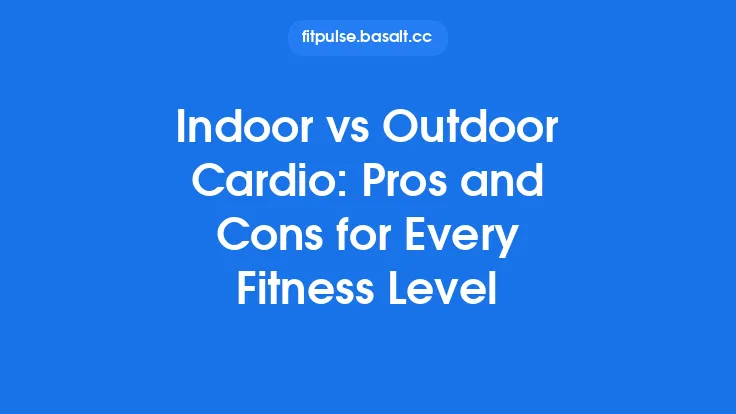Low‑impact cardio workouts are a cornerstone of a heart‑healthy lifestyle, especially for individuals who want to protect their joints while still reaping the cardiovascular benefits of regular aerobic activity. Unlike high‑impact options such as running or plyometric circuits, low‑impact modalities keep the stress on knees, hips, and ankles to a minimum, making them accessible to beginners, older adults, and anyone recovering from injury. By selecting the right exercises, adjusting intensity appropriately, and following a structured routine, you can build a sustainable cardio habit that supports heart function, improves circulation, and enhances overall endurance without compromising musculoskeletal health.
Why Low‑Impact Cardio Is Ideal for Heart Health
Low‑impact aerobic exercise still elevates heart rate and stroke volume, prompting the heart to pump more efficiently. The key advantages for cardiovascular health include:
- Reduced Joint Load: The smoother motion patterns limit compressive forces on weight‑bearing joints, decreasing the risk of osteoarthritis flare‑ups and allowing longer training sessions.
- Steady Hemodynamic Response: Because the movement is smoother, heart rate rises gradually, fostering a more controlled increase in cardiac output and oxygen delivery.
- Improved Endothelial Function: Repetitive, rhythmic activity stimulates nitric oxide production in the vascular lining, helping vessels dilate more readily during exertion.
- Enhanced Venous Return: The continuous muscle pump in activities like walking or cycling assists blood flow back to the heart, supporting preload and overall cardiac efficiency.
These physiological responses are achieved without the high‑impact forces that can deter many people from regular cardio participation.
Core Low‑Impact Cardio Modalities
Walking and Power Walking
Walking remains the most accessible form of low‑impact cardio. Power walking—incorporating brisk strides, arm swings, and a slight forward lean—raises heart rate to a moderate zone while still being gentle on the joints. Terrain can be varied (flat sidewalks, gentle inclines, or treadmill settings) to fine‑tune intensity.
Cycling (Stationary & Outdoor)
Both upright and recumbent bikes provide a seated, low‑impact platform. Recumbent bikes are especially joint‑friendly because the seat supports the lower back and distributes weight evenly. Outdoor cycling adds the benefit of wind resistance, which can be modulated by gear selection.
Swimming and Water Aerobics
Water buoyancy eliminates weight‑bearing stress, allowing the heart to work harder while the joints remain virtually weightless. Swimming laps, water jogging, or structured water‑aerobics classes provide full‑body aerobic stimulus with minimal impact.
Elliptical Training
Elliptical machines mimic the natural gait of walking or running but with a gliding footpath that eliminates heel strike. Adjustable resistance and incline settings let users progress from light to moderate cardiovascular loads.
Rowing with Light Resistance
Rowing machines engage the lower and upper body in a fluid, low‑impact motion. Using a light resistance setting keeps the focus on cardiovascular endurance rather than maximal strength, making it suitable for heart‑focused training.
Low‑Impact Dance and Aerobic Classes
Styles such as low‑impact Zumba, ballroom dance, or step‑free aerobic routines keep the heart rate elevated while emphasizing smooth, controlled footwork. These classes often incorporate music, which can improve adherence and enjoyment.
Gentle HIIT for the Heart
High‑Intensity Interval Training (HIIT) is often associated with high impact, but a “gentle HIIT” approach uses low‑impact intervals (e.g., 30 seconds of brisk walking followed by 60 seconds of easy walking). The brief spikes in heart rate still promote cardiovascular adaptations while preserving joint safety.
Tailoring Workouts to Different Fitness Levels
Beginners
- Frequency: 2–3 sessions per week.
- Duration: Start with 10–15 minutes of continuous activity, gradually adding 5‑minute increments each week.
- Intensity: Aim for a “light to moderate” effort—where you can speak in full sentences but feel slightly out of breath.
Intermediate
- Frequency: 3–4 sessions per week.
- Duration: 30–45 minutes per session.
- Intensity: Moderate effort—talk test should allow short phrases; perceived exertion around 5–6 on a 0‑10 scale.
Advanced
- Frequency: 4–5 sessions per week.
- Duration: 45–60 minutes, possibly incorporating longer steady‑state periods or gentle interval blocks.
- Intensity: Moderate‑to‑vigorous—still low impact, but heart rate may approach 70‑80 % of age‑predicted maximum.
Structuring a Heart‑Friendly Session
Warm‑Up (5–10 minutes)
Begin with low‑intensity movement (slow walking, easy pedaling) and dynamic stretches that mobilize the hips, shoulders, and ankles. This prepares the cardiovascular system for a gradual rise in heart rate and improves muscle elasticity.
Main Set (20–45 minutes)
Select a modality that matches your fitness level and goals. Maintain a steady rhythm, using the talk test or perceived exertion to stay within the target heart‑rate zone. For interval work, keep the high‑intensity bursts short (15‑30 seconds) and the recovery periods longer (60‑90 seconds).
Cool‑Down (5–10 minutes)
Gradually reduce intensity to bring heart rate down safely. Follow with static stretches for the calves, quadriceps, hamstrings, chest, and back to aid recovery and maintain flexibility.
Monitoring Intensity Without Complex Equipment
Talk Test
If you can converse comfortably, you’re likely in a moderate zone. If you can only speak a few words at a time, you’re approaching vigorous intensity. This simple cue works for any low‑impact activity.
Rating of Perceived Exertion (RPE)
A numeric scale from 0 (rest) to 10 (max effort) helps you gauge how hard you feel you’re working. Aim for 3–5 for most heart‑healthy sessions.
Simple Heart‑Rate Checks
A quick pulse check at the wrist or neck can estimate beats per minute. For a rough target, multiply your age by 0.6–0.7 (e.g., a 50‑year‑old would aim for 120–140 bpm during moderate effort). No need for a full‑featured monitor unless you prefer one.
Safety Considerations and Common Pitfalls
- Joint Health: Choose shoes with adequate cushioning and arch support. Replace them every 300–500 miles to maintain shock absorption.
- Surface Choice: Soft surfaces (track, rubberized flooring, grass) reduce impact forces compared with concrete or asphalt.
- Hydration: Even low‑impact sessions cause sweating; sip water before, during, and after exercise, especially in warm environments.
- Environmental Factors: Avoid extreme heat or cold, which can strain the cardiovascular system. Dress in breathable layers and consider indoor options when conditions are adverse.
- Progression Pace: Increase duration or intensity by no more than 10 % per week to prevent overuse injuries.
Progression Strategies to Keep the Heart Adapting
- Incremental Time Increases: Add 5‑minute blocks to your main set every 1–2 weeks.
- Adding Light Intervals: Introduce 15‑second bursts of slightly higher resistance or speed, followed by longer recovery.
- Cross‑Training: Rotate between walking, cycling, and swimming to challenge the heart from different movement patterns while giving specific muscle groups a break.
- Resistance Tweaks: On elliptical or bike, raise the resistance or incline modestly to increase cardiovascular demand without adding impact.
Incorporating Low‑Impact Cardio Into Everyday Life
- Active Transportation: Walk or bike to work, the grocery store, or a friend’s house. Even short trips add up over the week.
- Workplace Breaks: Take 5‑minute walking or marching‑in‑place breaks every hour to keep blood flowing and heart rate mildly elevated.
- Family Activities: Plan weekend outings such as nature walks, beachside swimming, or a family bike ride. Involving loved ones boosts motivation and makes cardio a social habit.
- Household Chores: Light‑impact tasks like vacuuming, gardening, or washing the car can serve as informal cardio if performed at a steady pace.
Frequently Asked Questions
How often should I do low‑impact cardio?
Aim for at least three sessions per week, each lasting 20–45 minutes. Consistency is more important than occasional long sessions.
Can I combine different modalities in one week?
Absolutely. Mixing walking, cycling, and swimming provides varied stimulus for the heart and reduces monotony.
What if I have a pre‑existing heart condition?
Consult your healthcare provider before starting any new program. Once cleared, begin with very low intensity, monitor symptoms closely, and progress only under professional guidance.
Do I need a heart‑rate monitor?
Not necessarily. The talk test, RPE, and occasional pulse checks are sufficient for most people. A monitor can be helpful for precise tracking, but it’s optional.
Bottom Line
Low‑impact cardio offers a joint‑friendly pathway to robust heart health. By selecting appropriate activities, tailoring intensity to your fitness level, and following a structured warm‑up, main set, and cool‑down, you can enjoy the cardiovascular benefits of aerobic exercise without the wear and tear associated with high‑impact workouts. Consistency, gradual progression, and mindful monitoring are the pillars of a sustainable routine that supports a strong, efficient heart for years to come.





